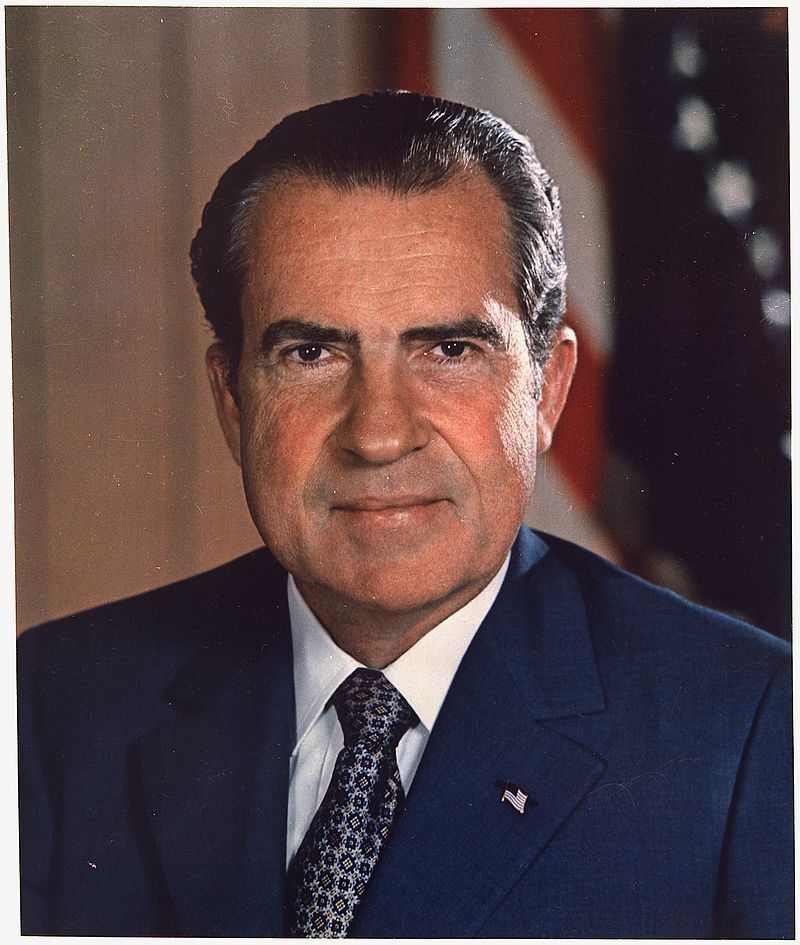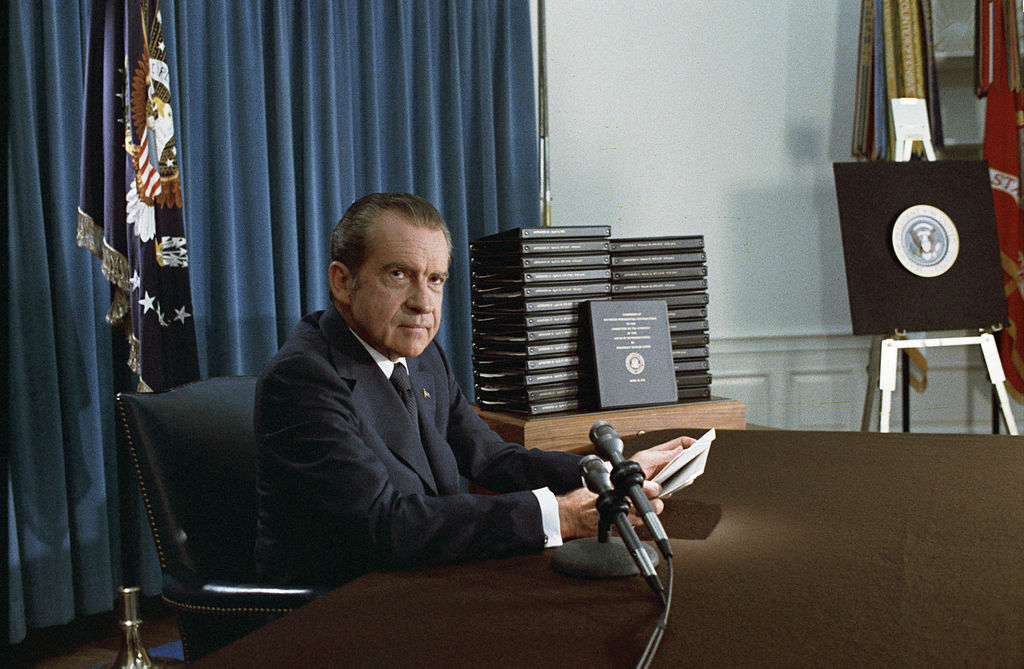Richard Milhous Nixon is an American jurist and politician. He was first Senator, then running mate, Vice President and finally President of the United States. In power for five years, he is best known for his involvement in the Watergate scandal and his role in international relations.
During his first term, he re-established ties with China, eased tensions with the USSR, fought drug abuse, increased aid for cancer research, froze prices and wages to reduce inflation, enforced racial desegregation in schools in Southern states, and created the Environmental Protection Agency (EPA). He also initiated the withdrawal of troops from Vietnam, leading to the end of the Vietnam War in 1975. By the end of his term, Richard Nixon was considered a peacemaker.
His second term was more stormy. It was marked by the world's first oil price crisis and its economic repercussions. However, it was the Watergate scandal that made the most waves, leading Nixon to tender his resignation.


-
1913: Richard Milhous Nixon is born on January 9, in California.
-
1948: Nixon leads an investigation to prove that Alger Hiss, a former State Department official, is in fact a Soviet spy. Hiss is convicted of perjury in 1950, and Nixon makes a national name for himself.
-
1952: He becomes General Dwight D. Eisenhower's running mate in the presidential campaign. Accused of taking bribes, he gives a speech on television. The speech, known as the Checkers Speech, was seen by over 60 million Americans, a record for the time.
-
1959: Visiting Moscow for the opening of the American Exhibition, Nixon talks with Premier Secretary Nikita Khrushchev about the benefits of capitalism and communism. This exchange, broadcast on television, became known as the Kitchen Debate. It was the first exchange between the USA and the USSR since 1955.
-
1962: Nixon tries to get elected governor of California, but fails. Many believe this to be the end of Nixon's political career.
-
1969: Nixon is elected President on January 20.
-
1972: The President and his wife make a diplomatic visit to China in February. The visit strengthens ties between the two countries.
-
1972: In May, Nixon and his wife make a diplomatic visit to Moscow. After extensive negotiations, the two presidents sign two treaties aimed at boosting trade between their countries and limiting nuclear weapons.
-
1972: Five men are arrested for breaking into the Democratic Party headquarters at the Watergate Hotel and attempting to plant bugs for illegal wiretapping. The burglars are linked to the Nixon administration.
-
1973: In retaliation for aid given to Israel in the Yom Kippur War, Arab countries impose an embargo on the sale of oil, triggering the first oil crisis in the United States.
-
1974: On May 9, the House of Representatives has enough damning evidence linking Nixon to the Watergate burglars and decides to launch impeachment proceedings to remove the President from office. Richard Nixon resigned on August 9. His successor, Gerald Ford, pardons him.
-
1994: He dies on April 22, in New York.